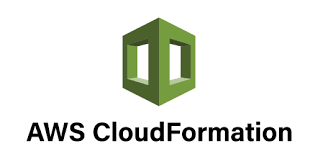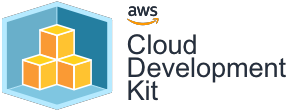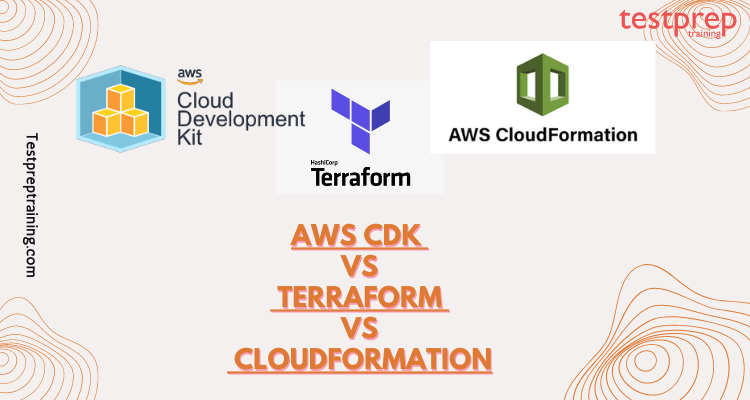Infrastructure as Code (IaC) is an approach to infrastructure automation where infrastructure configuration is defined and managed through code. This approach enables teams to automate the provisioning, configuration, and management of infrastructure, leading to faster and more consistent deployments.
AWS Cloud Development Kit (CDK), Terraform, and CloudFormation are popular Infrastructures as Code tools used to provision and manage AWS resources.
- AWS CDK is a software development framework that enables developers to define cloud infrastructure using familiar programming languages such as TypeScript, Python, and Java.
- Terraform is a declarative configuration management tool that allows infrastructure to be defined as code using a simple, human-readable language called HashiCorp Configuration Language (HCL).
- CloudFormation is a native AWS service that allows developers to create and manage AWS resources using JSON or YAML templates.
However, the purpose of this blog is to compare and contrast AWS CDK, Terraform, and CloudFormation to help readers understand the strengths and weaknesses of each tool and choose the best one for their projects. We will discuss the features, benefits, limitations, and use cases of each tool and provide a detailed comparison to help readers make an informed decision.
In this article, we will look at three different technologies for deploying infrastructure on AWS.
1. Terraform

Terraform is an open-source infrastructure as code tool created by HashiCorp that enables developers to define and manage infrastructure in a declarative configuration language called HashiCorp Configuration Language (HCL). Terraform can be used to manage infrastructure across multiple cloud providers, including AWS, Google Cloud, and Microsoft Azure.
Examples of Terraform usage:
- Provisioning AWS resources such as EC2 instances, S3 buckets, and RDS instances.
- Managing Kubernetes clusters across multiple cloud providers.
- Configuring network infrastructure such as virtual networks, subnets, and security groups.
- Deploying serverless applications using AWS Lambda and API Gateway.
Benefits of Terraform include:
- Supports multiple cloud providers and other infrastructure technologies, including on-premises servers and services.
- Provides a simple, declarative language for infrastructure configuration, enabling developers to define infrastructure as code.
- Offers a rich set of resources for managing infrastructure, including virtual machines, databases, load balancers, and more.
- Enables infrastructure to be version-controlled, providing transparency and auditability.
- Provides a plan and apply workflow that allows developers to preview infrastructure changes before they are applied.
- Enables easy collaboration between developers and teams through shared state files.
How Terraform Works:
- Developers define infrastructure resources in HCL configuration files.
- Terraform reads the configuration files and creates a dependency graph of the infrastructure resources.
- Terraform generates a plan for creating, updating, or deleting resources based on the configuration files.
- Developers review the plan and apply it to create, update, or delete resources in the infrastructure environment.
- Terraform stores the current state of the infrastructure in a state file that can be shared with team members or version-controlled.
Limitations of Terraform:
- Terraform’s HCL language can be less flexible and more verbose than other programming languages used for infrastructure as code, such as AWS CDK.
- Terraform’s execution time can be slow for larger infrastructures.
- Terraform state files can become difficult to manage when multiple developers are making changes to the infrastructure.
2. Cloudformation

AWS CloudFormation is an infrastructure as code service provided by AWS that enables developers to define and manage AWS resources as code. CloudFormation uses templates written in JSON or YAML to define the infrastructure resources and dependencies.
Examples of CloudFormation usage:
- Provisioning AWS resources such as EC2 instances, S3 buckets, and RDS instances.
- Configuring AWS networking infrastructure such as VPCs, subnets, and security groups.
- Deploying serverless applications using AWS Lambda and API Gateway.
- Managing AWS resources at scale through nested stacks and stacks sets.
Benefits of CloudFormation include:
- Provides a simple, declarative language for defining AWS resources, enabling developers to define infrastructure as code.
- Enables easy deployment, updating, and deletion of infrastructure resources through automated stacks.
- Supports dependency management and rollback capabilities to help with infrastructure updates and changes.
- Provides a change set feature that allows developers to preview infrastructure changes before they are applied.
- Enables infrastructure to be version-controlled, providing transparency and auditability.
- Integrates with other AWS services such as AWS CodePipeline and AWS CodeCommit for CI/CD pipeline automation.
How CloudFormation Works:
- Developers define infrastructure resources and dependencies in JSON or YAML templates.
- CloudFormation reads the templates and creates or updates AWS resources based on the definitions in the templates.
- CloudFormation creates stacks of resources based on the templates, which can be updated or deleted as necessary.
- CloudFormation provides a change set feature that allows developers to preview infrastructure changes before they are applied.
Limitations of CloudFormation:
- CloudFormation templates can be difficult to write and maintain for larger infrastructures, and the YAML/JSON syntax can be verbose.
- CloudFormation can only be used for AWS infrastructure, limiting its use for other cloud providers.
- CloudFormation can have longer execution times for larger infrastructures, which can impact deployment times.
3. AWS CDK

AWS Cloud Development Kit (CDK) is an open-source software development framework that allows developers to define cloud infrastructure using familiar programming languages such as TypeScript, Python, Java, C#, and JavaScript. AWS CDK offers a higher-level object-oriented abstraction layer over AWS CloudFormation to help developers manage infrastructure as code.
Examples of AWS CDK usage:
- Provisioning AWS resources such as EC2 instances, S3 buckets, and Lambda functions.
- Defining AWS networking configurations such as VPCs, subnets, and security groups.
- Deploying serverless applications using AWS Lambda and API Gateway.
- Configuring AWS CloudWatch alarms and event rules.
Benefits of AWS CDK include:
- Using familiar programming languages for defining infrastructure.
- Provides higher-level abstractions, enabling developers to define infrastructure in a more object-oriented manner.
- Simplifies the management of AWS resources by providing libraries and modules to help with infrastructure provisioning and configuration.
- Supports automated testing, deployment, and rollbacks of infrastructure.
- Enables developers to create reusable code for infrastructure provisioning and management.
- Provides integration with AWS CodePipeline and AWS CodeCommit for CI/CD pipeline automation.
How AWS CDK Works:
- Developers use their preferred programming language to define infrastructure as code.
- AWS CDK code is then compiled into an AWS CloudFormation template, which can be deployed to the AWS environment.
- AWS CDK generates AWS CloudFormation templates based on the code and provides a preview of the changes that will occur when the infrastructure is deployed.
- It also supports the deployment of AWS Lambda functions for custom resources, which can extend the capabilities of AWS CDK and enable developers to define custom infrastructure resources.
Limitations of AWS CDK:
- AWS CDK is still a relatively new technology and has a smaller community than other IaC tools.
- The learning curve for AWS CDK can be steep for developers who are not familiar with the supported programming languages.
- AWS CDK is only available for AWS cloud infrastructure, limiting its use for other cloud providers.
Comparison of AWS CDK, Terraform, and CloudFormation
When it comes to comparing AWS Cloud Development Kit (CDK), Terraform, and AWS CloudFormation, there are several factors to consider. Here’s a closer look at how they stack up:
Ease of Use:
- AWS CDK: AWS CDK offers a higher level of abstraction and allows developers to use their preferred programming language, making it more intuitive for developers who are familiar with programming.
- Terraform: Terraform offers a simple syntax for defining infrastructure resources, but it can be less intuitive for developers who are not familiar with HCL.
- CloudFormation: CloudFormation offers a simple syntax for defining AWS resources, but the YAML/JSON syntax can be verbose and more difficult to write and maintain.
Learning Curve:
- AWS CDK: AWS CDK requires knowledge of a programming language, which can be a steeper learning curve for some developers.
- Terraform: Terraform offers a relatively simple syntax, but developers need to learn the HCL language and the specific resource configurations for each cloud provider.
- CloudFormation: CloudFormation offers a simple syntax, but developers need to learn the AWS-specific YAML/JSON syntax and the specific resource configurations for each AWS service.
Supported Services:
- AWS CDK: AWS CDK supports a wide range of AWS services, including EC2, S3, Lambda, and more.
- Terraform: Terraform supports multiple cloud providers, including AWS, Google Cloud, and Microsoft Azure, and also supports other infrastructure technologies such as Kubernetes.
- CloudFormation: CloudFormation is limited to AWS infrastructure.
Community Support:
- AWS CDK: AWS CDK is still relatively new, but has been gaining popularity and has a growing community.
- Terraform: Terraform has a large and active community, with many third-party providers creating modules and resources for various cloud providers and technologies.
- CloudFormation: CloudFormation has a large and active community of AWS users and third-party providers.
Customization:
- AWS CDK: AWS CDK offers a high level of customization and flexibility, enabling developers to use their preferred programming language and create reusable constructs.
- Terraform: Terraform offers a high level of customization, allowing developers to create their own modules and use third-party modules for specific use cases.
- CloudFormation: CloudFormation offers some customization through the use of stack templates, but is more limited than AWS CDK and Terraform.
Integration:
- AWS CDK: AWS CDK integrates with other AWS services such as AWS CodePipeline and AWS CodeCommit, and can also integrate with third-party tools.
- Terraform: Terraform integrates with many third-party tools and services, including CI/CD tools and monitoring tools.
- CloudFormation: CloudFormation integrates with other AWS services such as AWS CodePipeline and AWS CodeCommit.
Performance:
- AWS CDK: AWS CDK can have slower deployment times for larger infrastructures due to the use of programming languages.
- Terraform: Terraform can have longer execution times for larger infrastructures due to the need to create a dependency graph of resources.
- CloudFormation: CloudFormation can have longer execution times for larger infrastructures due to the need to create a dependency graph of resources.
Cost:
- AWS CDK, Terraform, and CloudFormation are all free to use, but there may be costs associated with the AWS resources that are provisioned.
Choosing between AWS CDK, Terraform, and CloudFormation
Key factors to consider:
- The complexity of the infrastructure: For simple infrastructures, CloudFormation may be the easiest tool to use. For more complex infrastructures, Terraform and AWS CDK offer more flexibility and customization.
- Familiarity with programming languages: Developers who are more comfortable with programming languages may prefer AWS CDK over Terraform or CloudFormation.
- Multi-cloud deployment: If your project involves deploying infrastructure to multiple cloud providers, Terraform may be the better choice.
- Integration with other tools: Consider which tools and services you are already using and which tool integrates best with those tools and services.
Which tool is best suited for your project?
- For simple infrastructures: CloudFormation may be the easiest tool to use.
- For multi-cloud deployment: Terraform may be the better choice.
- For customizability and flexibility: AWS CDK may be the best choice for developers who are comfortable with programming languages and want more customization options.
Use cases for each tool:
- AWS CDK: AWS CDK is well-suited for projects that require a high level of customization and flexibility, particularly for developers who are familiar with programming languages.
- Terraform: Terraform is well-suited for projects that require multi-cloud deployment or integration with other tools and services.
- CloudFormation: CloudFormation is well-suited for simple infrastructure projects or projects that are limited to the AWS ecosystem.
Final Words
In conclusion, choosing the right Infrastructure as Code (IaC) tool for your project depends on several factors such as the complexity of the infrastructure, familiarity with programming languages, multi-cloud deployment, integration with other tools and services, and customizability and flexibility.
AWS Cloud Development Kit (CDK) is a great choice for developers who are comfortable with programming languages and require a high level of customization and flexibility. Terraform is a good option for projects that require multi-cloud deployment or integration with other tools and services. CloudFormation is best suited for simple infrastructure projects or projects that are limited to the AWS ecosystem.
To make an informed decision, it is recommended to evaluate the key factors and uses cases for each tool before deciding which one to use.



